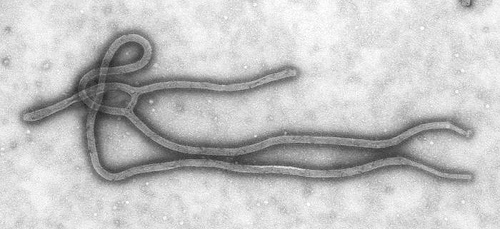What Is Ebola and How Hazardous Is Its Waste?
October 28, 2014
What is Ebola?
Ebola or Ebola Virus Disease (EVD) is an infectious virus (of which there are five known strains) first discovered in 1976. The virus has, heretofore, mostly been known to be found near where it was first discovered, by the Ebola River in the Democratic Republic of the Congo, and in and around West Africa.
But after the events of late September 2014, which saw the admittance of an Ebola-infected Liberian man to a Dallas hospital, news of the disease has been popping up in headlines and discussed among healthcare professionals in hospitals all across America.
What are its symptoms and how is it spread?
Researchers have speculated the virus is animal-borne and that bats are the likely “reservoir host”. It is a deadly disease, to be sure, and symptoms of the disease start to show only a short time after its two-to-twenty-one day incubation period.
According to the World Health Organization, symptoms may include
- fever,
- sore throat,
- vomiting,
- joint and muscle aches,
- diarrhea,
- stomach pain,
- rash, or
- bleeding from bodily openings.
EVD is only spread via direct contact with the contagion through blood or bodily fluids or the soiled linens or contaminated bed sheets, so properly disposing of this waste is of paramount importance. It has been estimated that a typical Ebola patient will generate around eight 55-gallon drums of infectious waste per day. And although the virus is not particularly strong or aggressively contagious (it is not spread through the air or by water like other viruses), the appropriate precautions must be taken by anyone, especially healthcare workers, who may come into contact with the disease.
How can healthcare workers keep themselves safe from the disease?
The Center for Disease Control (CDC) calls for personal protective equipment for all nurses, doctors, and aides who may be treating someone suspected to be suffering from EVD. The agency mandates that healthcare workers who treat Ebola patients stick to the Recommended Standard Contact and Droplet Precautions classification of protective wear. This particular level of PPE includes:
- Inner and outer gloves;
- Hair covering;
- Mask;
- Face shield and/or goggles; and
- Liquid-impervious boots and surgical gown.
The CDC also recommends that some type of positive-pressure respirator be worn, especially during surgical procedures. Some high-exposure hospitals in the U.S. and West Africa, not wishing to take any chances, have begun to ask their staff to don the Enhanced Precautions for High-Risk Healthcare Workers level of PPE. This includes most of the gear in the lower-grade level, but switches out the gown for an impervious or liquid-resistant one-piece, fully covered suit with hood. A positive-pressure respirator also is worn with the head-to-toe suit in this grade of PPE.
How is Ebola waste disposed of?
EVD is classified as Category A in the U.S. Department of Transportation’s (DOT) Hazardous Materials Regulations (HMR). This means that any waste that has been suspected to have been contaminated by the Ebola virus must comply with HMR standards when being transported to an off-site waste facility.
The CDC recommends that Ebola waste be disposed of in one of two ways, inactivation by means of an autoclave (a pressurized chamber used for sterilization), or incineration. After the autoclaving or incineration process has been appropriately carried out (either onsite or by a permitted waste treatment facility), the waste is no longer infectious and also is no longer considered hazardous or medical waste by federal law. Finally, the inert ash or remnants of the former-Ebola waste may be transported or disposed of according to local regulations.
If you would like to know more about the proper disposal of infectious waste, we’re here to help. Please give us a call at 800-936-2311 if you need any additional information or assistance.


